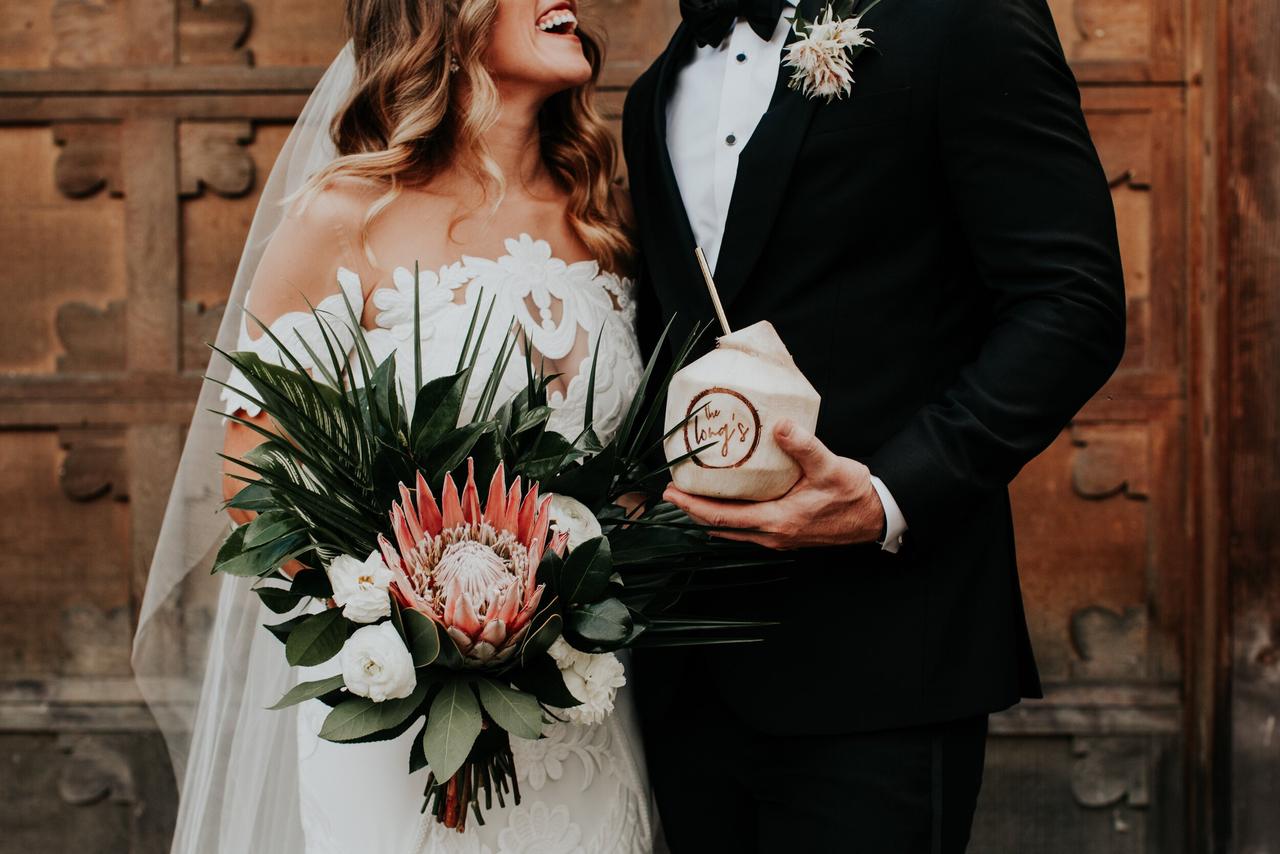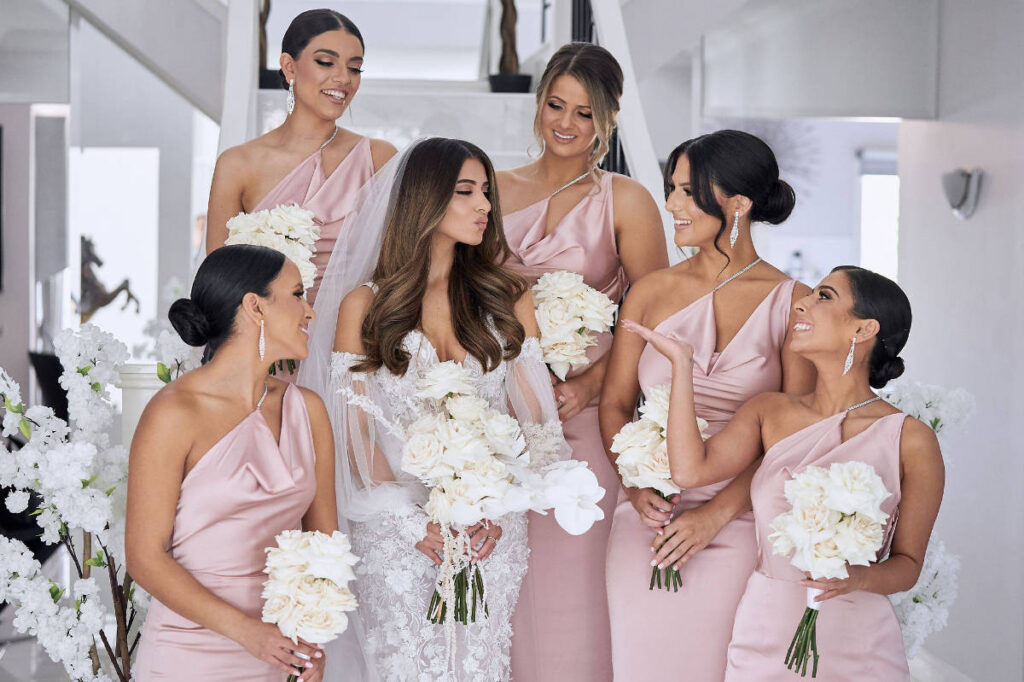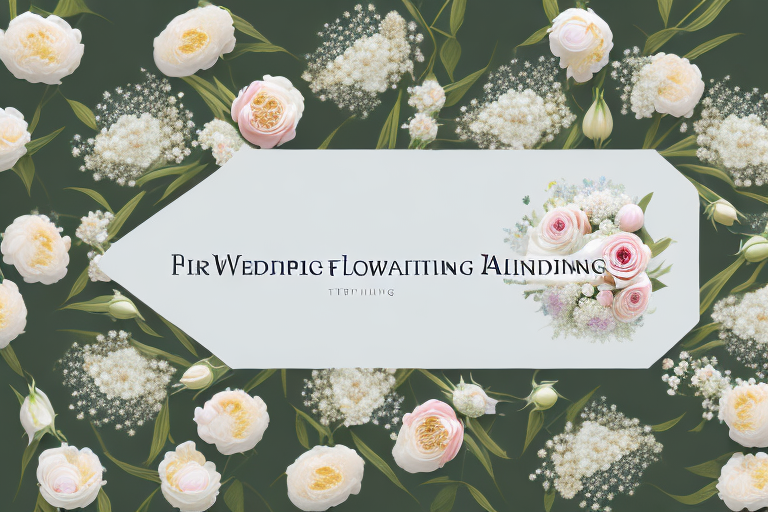A Guide to the Most Popular Wedding Flowers and Their Meanings

In planning a wedding, every detail matters, and choosing the right flowers is no exception. Wedding flowers do more than just beautify the ceremony & reception—they also carry meanings and symbolism that can add depth and significance to your special day. Understanding the symbolism behind different wedding flowers can help you create a truly meaningful and personalized experience for you and your partner. In this guide, we will explore the most popular wedding flowers and their meanings, as well as provide tips for choosing the right flowers for your wedding theme and season.
Understanding the Symbolism of Wedding Flowers
Wedding flowers have been used throughout history to convey emotions, represent important virtues, and symbolize love. The practice of using flowers in weddings can be traced back to ancient civilizations, where specific flowers were chosen for their symbolic meanings. The language of flowers, also known as floriography, became particularly popular during the Victorian era, as each flower was assigned a specific meaning.
One of the key historical significances of wedding flowers is their ability to convey messages and emotions silently, allowing couples to express their feelings without words. Understanding the symbolic meanings of wedding flowers ideas can help you choose the right blooms that align with your personal beliefs, values, and emotions.
The Historical Significance of Wedding Flowers
Wedding flowers have always held a special place in ceremonies and celebrations. In ancient Rome, brides carried flowers to ward off evil spirits and signify new beginnings. It was believed that the fragrance of the flowers would protect the couple from any negative energy on their special day. Additionally, specific flowers were chosen based on their association with various gods and goddesses, bringing blessings and good fortune to the newlyweds.

In medieval Europe, herbs and flowers were worn as a defense against bad luck and evil spirits. It was believed that these fragrant blooms would ward off any negative influences and bring happiness and prosperity to the couple. The tradition of carrying a bouquet down the aisle has evolved over time, but the symbolism associated with wedding flowers remains an essential part of the ceremony. Visit https://gardeningreviewer.com/seasonal-selections-choosing-the-perfect-wedding-flowers-for-your-special-day/ to get about seasonal selections.
During the Renaissance period, wedding flowers took on a new level of significance. Different flowers were chosen based on their colors and meanings. For example, red roses symbolized passionate love, while white lilies represented purity and innocence. These flowers were carefully selected to convey the couple’s emotions and intentions, making the wedding ceremony even more meaningful.
The Language of Flowers: An Overview
During the Victorian era, flowers took on an entirely new language. Each flower held a specific meaning, allowing individuals to communicate their feelings discreetly. This was particularly important in a society where openly expressing one’s emotions was considered inappropriate. The language of flowers, also known as floriography, became a popular way to convey messages of love, friendship, and even rejection.
For example, the rose symbolized love and passion, making it a popular choice for wedding bouquets. However, the color of the rose also held significance. A red rose represented passionate love, while a pink rose symbolized admiration and gratitude. White roses, on the other hand, were associated with purity and innocence, making them a common choice for bridal bouquets.
Other flowers also held specific meanings. The lily represented purity and devotion, making it a popular choice for weddings. The tulip symbolized perfect love, while the daisy represented innocence and loyalty. By carefully selecting the flowers for their bouquets and arrangements, couples could express their deepest emotions and intentions without uttering a single word.
Understanding the language of flowers can help you express your feelings and intentions through the choices you make for your wedding flowers. Whether you choose roses for passionate love, lilies for purity, or tulips for perfect love, each flower adds a layer of meaning and significance to your special day.
The Most Popular Wedding Flowers and Their Meanings
When it comes to wedding flowers, certain blooms have stood the test of time and continue to be a popular choice for couples. Let’s explore the meanings behind some of the most beloved wedding flowers:
Roses: The Symbol of Love and Passion
Roses are widely recognized as the ultimate symbol of love and passion. They come in various colors, each carrying its own significance. Red roses are a classic choice for weddings, symbolizing deep love and desire. Pink roses represent grace and admiration, while white roses signify purity and innocence. Incorporating roses into your wedding can add a touch of romance and elegance to the atmosphere.
Imagine walking down the aisle, surrounded by a sea of red roses. The vibrant petals exude a sense of passion and romance, filling the air with a sweet, floral aroma. As you exchange vows, the symbolism of the red roses reinforces the deep love and desire you have for one another. The beauty of the roses mirrors the beauty of your relationship, reminding everyone present of the power of love.
Lilies: Representing Majesty and Honor
Lilies are majestic and regal flowers, often associated with royalty and honor. They symbolize purity and innocence, making them a popular choice for weddings. Lilies come in different varieties, including the popular Calla lily and the fragrant Stargazer lily. These stunning blooms can bring an air of sophistication and grandeur to your wedding decor.
Imagine a grand entrance, where the aisle is lined with tall vases filled with elegant white lilies. The sight of these majestic flowers immediately sets the tone for a regal and honorable ceremony. As you walk down the aisle, the fragrance of the lilies fills the air, creating a serene and peaceful ambiance. The purity and innocence represented by the lilies serve as a reminder of the sacredness of your union.
Tulips: A Declaration of Love
Tulips are known for their vibrant colors and graceful shape. They symbolize perfect love and are often associated with new beginnings. Tulips come in a wide range of colors, allowing you to choose the hue that best represents your love and commitment. From the romantic red tulips to the cheerful yellow ones, these versatile flowers can suit any wedding theme.
Imagine a spring wedding, where the venue is adorned with an abundance of tulips in various colors. The vibrant red tulips symbolize the intense love and passion you share, while the yellow tulips represent the joy and happiness that fills your hearts. As you exchange vows, the tulips serve as a visual representation of your commitment to a new beginning, a fresh start filled with love and devotion.

Orchids: Exotic Beauty and Strength
Orchids are exotic and elegant flowers that symbolize beauty, strength, and luxury. These unique blooms come in various shapes, sizes, and colors. From delicate white orchids to vibrant purple ones, there is an orchid for every wedding style. Incorporating orchids into your floral arrangements can add a touch of sophistication and allure to your big day.
Imagine a tropical destination wedding, where the venue is adorned with cascading orchids in shades of white and purple. The exotic beauty of the orchids transports you and your guests to a paradise filled with elegance and luxury. As you exchange vows, the strength represented by the orchids serves as a reminder of the resilience and determination you both possess, ready to face any challenges that come your way.
Peonies: Prosperity and Good Fortune
Peonies are lush and romantic flowers that symbolize prosperity and good fortune. These fragrant blooms are often associated with happy marriages and lasting relationships. With their voluminous petals and sweet scent, peonies make a stunning statement in bridal bouquets and centerpieces.
Imagine a summer wedding, where the bridal bouquet is filled with blooming peonies in shades of pink and white. The lushness of the peonies symbolizes the abundance of love and prosperity in your lives. As you hold the bouquet, the sweet scent of the peonies envelops you, creating a sense of tranquility and contentment. The presence of the peonies serves as a reminder of the good fortune that brought you together and the happiness that awaits you in the future.
Choosing the Right Flowers for Your Wedding Theme
Once you understand the meanings behind wedding flowers, it’s important to consider how they align with your chosen wedding theme. Different themes call for different types of flowers and color palettes. Whether you’re going for a classic, rustic, beach, or vintage theme, there are flowers that will perfectly complement your vision.
Classic Wedding Flowers
For a classic wedding theme, stick to timeless flowers such as roses, lilies, and peonies. These flowers exude elegance and sophistication and will create a timeless atmosphere for your special day. Pair them with soft colors such as ivory, blush, and champagne for a romantic and refined look.
Rustic Wedding Flowers
If you’re dreaming of a rustic wedding filled with natural elements, opt for wildflowers and blooms with a relaxed and organic feel. Sunflowers, daisies, and lavender are great choices for a rustic theme. Embrace earthy tones such as deep yellows, purples, and greens to create a warm and inviting atmosphere.
Beach Wedding Flowers
A beach wedding calls for flowers that evoke a sense of tropical paradise. Think vibrant blooms like hibiscus, orchids, and tropical foliage. Use bright and bold colors like coral, turquoise, and sunny yellow to capture the essence of the ocean and create a festive beach ambiance.
Vintage Wedding Flowers
For a vintage-inspired wedding, turn to flowers with a nostalgic feel. Roses, peonies, and hydrangeas are perfect choices for a vintage theme. Opt for soft pastel colors like blush, lavender, and pale blue to create a romantic and dreamy atmosphere reminiscent of eras gone by.

Seasonal Wedding Flowers and Their Significance
Another important factor to consider when choosing wedding flowers is the season. Each season brings with it a unique selection of blooms that can enhance the overall ambiance of your wedding. Let’s explore some seasonal wedding flowers and their significance:
Spring Wedding Flowers
Spring is a season of rebirth and renewal, making it an ideal time for weddings. Popular spring blooms include tulips, daffodils, cherry blossoms, and peonies. These flowers symbolize new beginnings, love, and prosperity, perfectly capturing the spirit of this season.
Summer Wedding Flowers
Summer is a vibrant and joyful season, and the floral choices reflect that. Sunflowers, daisies, roses, and hydrangeas are popular summer wedding flowers. These bright and lively blooms symbolize happiness, love, and abundance, adding a playful and cheerful touch to your wedding.
Autumn Wedding Flowers
Autumn is a season of warm colors and cozy vibes, and the flowers of this season mirror that aesthetic. Dahlias, chrysanthemums, roses, and calla lilies are fitting choices for an autumn wedding. These flowers symbolize love, gratitude, and change, perfectly complementing the golden hues of this season.
Winter Wedding Flowers
A winter wedding holds a touch of magic and enchantment. When it comes to floral choices, opt for blooms that capture the elegance and charm of the season. Popular winter flowers include amaryllis, poinsettias, holly, and roses. These flowers symbolize beauty, love, and hope, evoking a sense of winter wonderland.
Conclusion
Choosing the right wedding flowers is not just about aesthetics—it’s about incorporating meaningful symbolism into your special day. Whether you decide to go with classic roses or exotic orchids, each bloom carries its own significance that can add depth and emotion to your wedding celebration. Take the time to explore the meanings behind different flowers, consider their suitability for your wedding theme, and embrace the beauty of seasonal blooms. By doing so, you’ll create an unforgettable and meaningful atmosphere that resonates with you and your partner for years to come.
